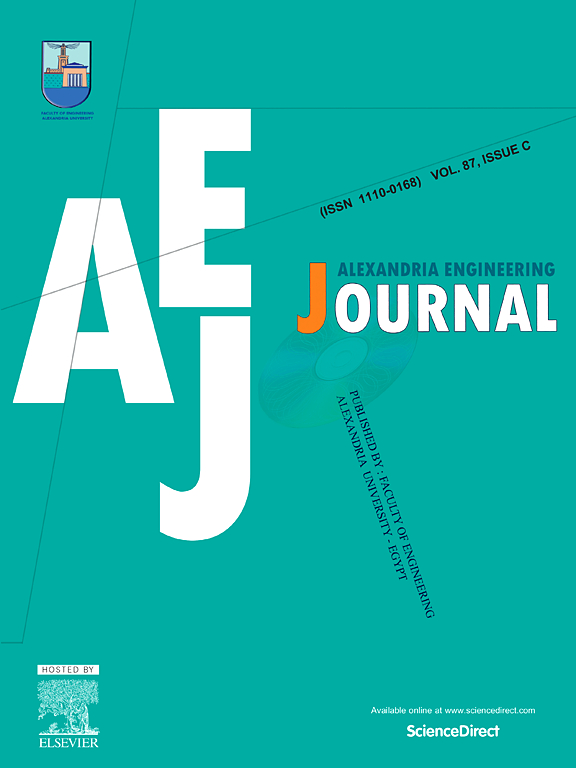Nonlinear forced vibration of the FGM piezoelectric microbeam with flexoelectric effect
IF 6.8
2区 工程技术
Q1 ENGINEERING, MULTIDISCIPLINARY
引用次数: 0
Abstract
In this paper, based on the extended dielectric theory, Euler beams theory and von Karman’s geometric nonlinearity, a nonlinear FGM piezoelectric microbeam model is established with flexoelectric effect. The governing equations, initial conditions and boundary conditions are obtained by applying Hamilton’s principle and then solved by combining the differential quadrature method (DQM) and iteration method. The innovation of this paper is to construct a nonlinear forced vibration model of piezoelectric microbeams. The coupling response between the inverse flexoelectric effect and the inverse piezoelectric effect is investigated. Various effects are examined, including the functional gradient index m and transverse distributed load q affecting the distribution of electric potential. Results indicated that the functional gradient index m, beam thickness h, and span-length ratio L/h have a significant impact on the dimensionless deflection of the FGM microbeam. The influence of the flexoelectric effect on dimensionless deflection increases with the decrease of scale. In addition, transverse load q and the functional gradient index m also have a significant impact on the distribution of electric potential. This paper will provide useful theoretical guidance for the design of micro-sensors and micro-actuators.
具有柔电效应的 FGM 压电微梁的非线性受迫振动
本文基于扩展介电理论、欧拉梁理论和 von Karman 几何非线性理论,建立了具有挠电效应的非线性 FGM 压电微梁模型。应用汉密尔顿原理得到了控制方程、初始条件和边界条件,然后结合微分正交法(DQM)和迭代法进行求解。本文的创新之处在于构建了压电微梁的非线性受迫振动模型。研究了反挠电效应和反压电效应之间的耦合响应。研究了各种效应,包括影响电动势分布的功能梯度指数 m 和横向分布载荷 q。结果表明,功能梯度指数 m、梁厚度 h 和跨长比 L/h 对 FGM 微梁的无量纲挠度有显著影响。挠电效应对无量纲挠度的影响随着尺度的减小而增大。此外,横向载荷 q 和功能梯度指数 m 对电动势的分布也有显著影响。本文将为微传感器和微执行器的设计提供有用的理论指导。
本文章由计算机程序翻译,如有差异,请以英文原文为准。
求助全文
约1分钟内获得全文
求助全文
来源期刊

alexandria engineering journal
Engineering-General Engineering
CiteScore
11.20
自引率
4.40%
发文量
1015
审稿时长
43 days
期刊介绍:
Alexandria Engineering Journal is an international journal devoted to publishing high quality papers in the field of engineering and applied science. Alexandria Engineering Journal is cited in the Engineering Information Services (EIS) and the Chemical Abstracts (CA). The papers published in Alexandria Engineering Journal are grouped into five sections, according to the following classification:
• Mechanical, Production, Marine and Textile Engineering
• Electrical Engineering, Computer Science and Nuclear Engineering
• Civil and Architecture Engineering
• Chemical Engineering and Applied Sciences
• Environmental Engineering
 求助内容:
求助内容: 应助结果提醒方式:
应助结果提醒方式:


